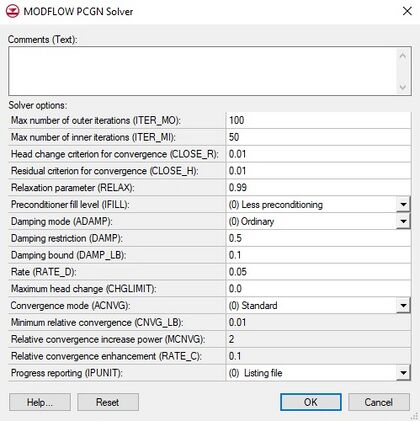GMS:PCGN Package: Difference between revisions
From XMS Wiki
Jump to navigationJump to search
No edit summary |
No edit summary |
||
| Line 24: | Line 24: | ||
** (1) Adaptive | ** (1) Adaptive | ||
** (2) Enhanced | ** (2) Enhanced | ||
* Minimum relative convergence (CNVG_LB) – Requires adaptive convergence mode. The minimum value that the relative convergence ε is allowed to take under the self-adjusting convergence option. | * ''Minimum relative convergence (CNVG_LB)'' – Requires adaptive convergence mode. The minimum value that the relative convergence ε is allowed to take under the self-adjusting convergence option. | ||
* Relative convergence increase power (MCNVG) – Requires enhanced convergence mode. Increases the relative PCG convergence criteria by a power equal to MCNVG. | * ''Relative convergence increase power (MCNVG)'' – Requires enhanced convergence mode. Increases the relative PCG convergence criteria by a power equal to MCNVG. | ||
* Relative convergence enhancement (RATE_C) – Requires enhanced convergence mode. Results in variable enhancement of ε. | * ''Relative convergence enhancement (RATE_C)'' – Requires enhanced convergence mode. Results in variable enhancement of ε. | ||
* Progress reporting (IPUNIT) | * Progress reporting (IPUNIT) | ||
** (-1) None | ** (-1) None | ||
